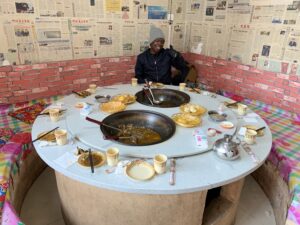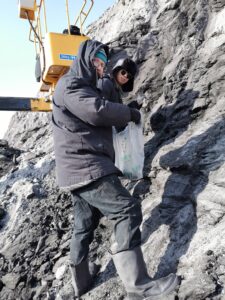On the 7th of June, 9pm Brisbane, Australia time I’ll be giving an invited lecture on some of
the palaeoclimate, palaeovegetation and palaeotectonic studies we’ve been doing in the Hailar Basin, Inner Mongolia, China. This is for The Society for Organic Petrology.
Read the abstract for the talk below.
It’s ONLINE and Open to All!
Join via Teams:
Microsoft Teams meeting
Join on your computer, mobile app or room device
Click here to join the meeting
Meeting ID: 371 312 384 429
Passcode: 8VBH3G
Download Teams | Join on the Web
Join with a video conferencing device
uwr-wroclaw@m.webex.com
Video Conference ID: 124 137 148 6
Its Hot in Hailar: The challenges of accumulating peat at 45ºN in the Early Cretaceous of Inner Mongolia
Tim A Moore1,2,3,
1Managing Director, Cipher Consulting Pty Ltd, Kenmore, Australia
2Adjunct Professor, School of Earth and Atmospheric Sciences, Queensland University of Technology, Brisbane, Australia
3Distinguished Visiting Professor, School of Geology and Resources, Xuzhou and School of Geosciences and Survey Engineering, Beijing, China University of Mining and Technology, China
The Early Cretaceous would have been one of the most interesting times to be alive. It was hot, there were dinosaurs, atmospheric oxygen levels were on the rise and the first flowering plants, aka angiosperms, were starting to make their mark on the landscape. But the detail of what life really was like in some environments in some places on Earth at this time is still open to debate.
One such area is north-eastern Asia during the Early Cretaceous where extensive paleomires were developing at high latitudes. The paleomires resulted in incredibly thick coals (70 m +) and were areally extensive as well as temporally long lasting. In order to try and understand the drivers of

Hot Pot Lunch! Dr O. Marvin Moroeng after a cold day of sampling at the Yimin mine, Inner Mongolia, China (November 2019)
peat accumulation in this region, an initial study in the Hailar Basin of Inner Mongolia, China was chosen for study. In November 2019, just before the start of the pandemic, we made our way to the Hailar Basin to collect samples, which proved quite a challenge in the -16ºC weather. The team in the field and later collaborating scientists consisted of Prof Jian Shen (China), Dr Jingjing Liu (China), Dr Ofentse Marvin Moroeng (South Africa), Dr Alex Wheeler (Germany), Prof Joan Esterle (Australia) and Dr Roman Pausch (USA).
The study showed the Early Cretaceous paleomires were subjected to almost constant fires; inertinite contents (i.e. fossil charcoal) are on average 55% and some intervals as much as 83%. The presence of degradofusinite and degradosemifusinite along with indicators from δ13C and δ15N suggest secondary alteration of the inertinite from intense drying and wetting cycles. Intracratonic areas are known for their seasonality and thus it seems reasonable to assume the Hailar Basin was also intensely seasonal, especially since it was (and still is) hundreds of kilometers from the sea. This seasonality may have resulted in dry periods, more prone to fire events and the generation of extensive charcoal.
The palynology also tells an interesting story. The types of plants present in the mires indicate a temperature range typical of tropical to subtropical climates. However, not a single angiosperm pollen was found in all the coal sampled in this study. Angiosperms are known to be around at this time, but perhaps they were not yet evolved enough to push their way into a mire environment.
So: it was hot, but perhaps with significantly alternating seasons of wet and dry. Thick zones within the coal of extremely high degradofusinite and degradosemifusinite suggest that some longer-term dry climate influence may also have occurred. The mires were populated with mainly gymnosperms and ferns, and along with the rising atmospheric oxygen levels, fire may have been an important part of these Early Cretaceous intracratonic paleomire ecosystems.
Want to learn more? See the two published papers below – and more to come. We are off in June and July back to the Hailar Basin for more sampling and analyses.
Moore, T.A., Moroeng, O.M., Shen, J., Esterle, J.S., Pausch, R.C., 2021. Using carbon isotopes and organic composition to decipher climate and tectonics in the Early Cretaceous: An example from the Hailar Basin, Inner Mongolia, China. Cretaceous Research 118, 104674, https://doi.org/10.1016/j.cretres.2020.104674, 25 pp.
Wheeler, A., Shen, J., Moore, T.A., Moroeng, O.M., Liu, J., 2022. Palaeoecology and palaeoclimate of an Early Cretaceous peat mire in East Laurasia (Hailar Basin, Inner Mongolia, China). Palaeogeography, Palaeoclimatology, Palaeoecology 599, 24 pp., https://doi.org/10.1016/j.palaeo.2022.111050.




Comments are closed.